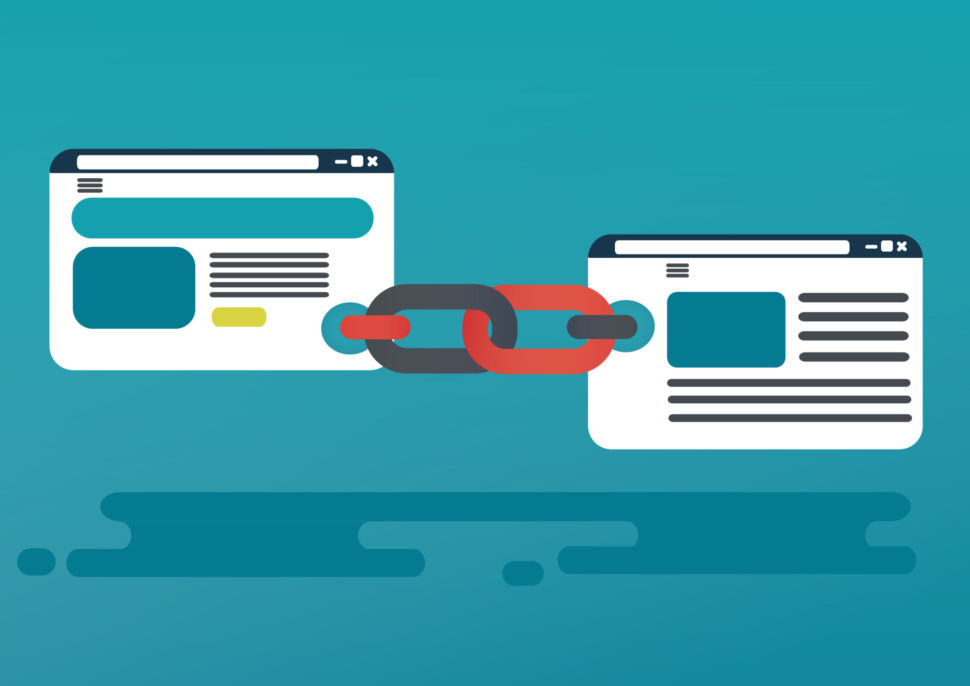Link placement and utilization are some of the most important ways for you to develop a well-ranking and popular page for your business or site.
If used correctly, it can take your site from a second-page ranking on Google right up to the top five.
One of the most important aspects of building link placement strategies is to remember that effective placement is vital.
A link embedded in a video will perform entirely differently to one embedded in the text. Similarly, Google will look differently at a link embedded in a header to one placed in a footer.
Here are:
-
five tips for quality internal link placement, and
-
five more tips on external link placement to make sure that you can make the most of the links you provide on your page.
Building Link Placement Strategies for Internal Links

1. Content Links Matter More Than Navigation Links
In Google’s analysis of your page, it’s more common for links placed in the content section to rank better than ones in your navigation bar.
It may seem obvious, but Google and readers will often see links embedded in your content as more valuable and informative. Furthermore, links within your copy will also often be unique links–which is always a plus for Google.
Read More: Boosting Your Content Marketing Tactics With Artificial Intelligence
Unique links can help you rank since they cannot be seen as duplicates. This is a common issue with navigational links that are placed on multiple pages.
This content versus navigation link placement is not always the case, but it is common enough for it to potentially make a significant difference. If used correctly, it could lead to some effective building link practices that will help your page rank far more successfully.
2. Links in Footers Aren’t Valuable
In general, footer links are often overlooked, devalued, or ignored by Google. A link placed in a footer does not carry as much weight as the same link placed in a different area.
Overall, only use footer links for things such as navigation or indexing. It is far better for your page to place these links either in your headers or, if possible, within the content itself.
Footer links are likely to be the least useful links on your page for SEO ranking. Try to focus on other areas and leave this section solely for indexing.
3. More Popular Links Carry More Weight and Value
Although this is only a theory, it is one that has seen significant results for many sites.
Think about it.
SERP ranking is based partially on referring domains. Popular links are more useful for improving your site’s ranking than less used or obscure links.
Read More: How to Boost SEO, SERP Ranking, and Google Listing With Videos
For example, a link to the main landing page of a site is likely to be far more popular and relevant to your users and Google than a less used and more obscure page on the same site.
On your page, you should try to use the most popular link possible for your needs. The popularity and authority of that page are likely to transfer over to your own in time.
4. Make Sure That Your Links are as Visible as Possible
From a design and UX point of view, it’s easy to see why this is important. Small, hard to read or marginalized links are far less likely to be seen or even used by users. This will quickly become apparent in their click-through rate.
This lower CTR and poor visibility make these links less valuable to your site. Make sure that all links on your page are clearly highlighted and effectively placed to improve their efficacy.
5. When you Have Multiple Links to the Same URL, Only the First one Counts
Although having multiple links to the same internal page may seem beneficial, it doesn’t help your SEO at all. This is because Google only sees the first URL and ignores all the repetitions of it afterward.
Google does this to stop people from “gaming” its search algorithms by stuffing multiple duplicate links into one page for it to rank better.
So, if you’re using a link for the first time, make sure that it is placed effectively (hint: in the content of the page). This is true for both internal and external links, so make sure to pay attention to this at all times.
Building Link Placement Strategies for External Links

A few of these points will be similar to the internal links section. However, it’s important to stress these link building practices as they can have a significant effect on your page’s ranking.
1. In General, In-Content Links Perform Better Than Navigation or Footer Links
As with internal links, the best place to put your external link is in the content. Navigation links can be overlooked or devalued by Google, while footer links are often ignored.
In most cases of link building strategies, always prioritize content links, then navigation and header links (they both perform around the same), and finally footer links as a last resort.
Read More: How To Use Keywords And Backlinks To Create A Solid Link-Building Strategy
2. Whether a Link Opens in a New Tab or Whether it Stays in the Same Tab Makes no Difference to Your SEO
There is nothing more annoying than when you are in the middle of reading an article, click a link, and get sent to a different page within the same tab.
To me, this is on the same level as autoplaying videos or popup ads that cannot be closed. For your UX, it’s a great idea to make sure that all your content links open up in a new tab.
However, it doesn’t make much of a difference when it comes to your SEO. There is no evidence to suggest that either option has an advantage over the other.
In general, though, most users often prefer when links open in a new tab. It’s a good practice to maintain your link placement strategies.
Read More: 3 Rules for SEO-friendly Modal Windows
3. Text Links Usually Perform Better Than Image Links
Google’s algorithm usually ranks text links over image or video links. This is important to remember if you are placing an image with a link as the first link to a site on your page.
In general, try to place a text link above the image or video link to improve your SEO score.
4. Similarly to Internal Links, if you Have Multiple Versions of the Same Link, Google Will Only Count the First one it Finds
It’s also important to remember that it measures the first link as the first one found in the HTML, not as it would visually appear on the page. This is also important to remember when taking our previous point into account.
Make sure that a text link is always placed before an image or video link in your HTML. Otherwise, your page’s ranking might suffer.
Read More: How To Build A Strong SEO Foundation For A New Website
5. Having the Same External Link on Every Page on Your Site is Detrimental to SEO Ranking
Although it may seem like a good idea to place a popular or effective link on every page, this can often be seen as spam or SEO manipulation by Google. If you do have an effective link you want to use, focus on effective rather than expansive placement.
In most cases, if you do have an important external link that you want to utilize to its full potential, place it in a prominent location such as on your home page.
Building Link Placement Strategies is Key to Creating a High Ranking Page
Link placement is a vitally important aspect of your page and content design. Both internal and external links have the potential to significantly increase the ranking of your page, often with just a few minor tweaks.
In most cases, make sure your links are placed in visible and effective areas within your content to get the most out of their placement. Also, if you are using duplicate links, make sure that the first one you place is a text link that is embedded in the most effective place possible.



















Comments (0)
Most Recent